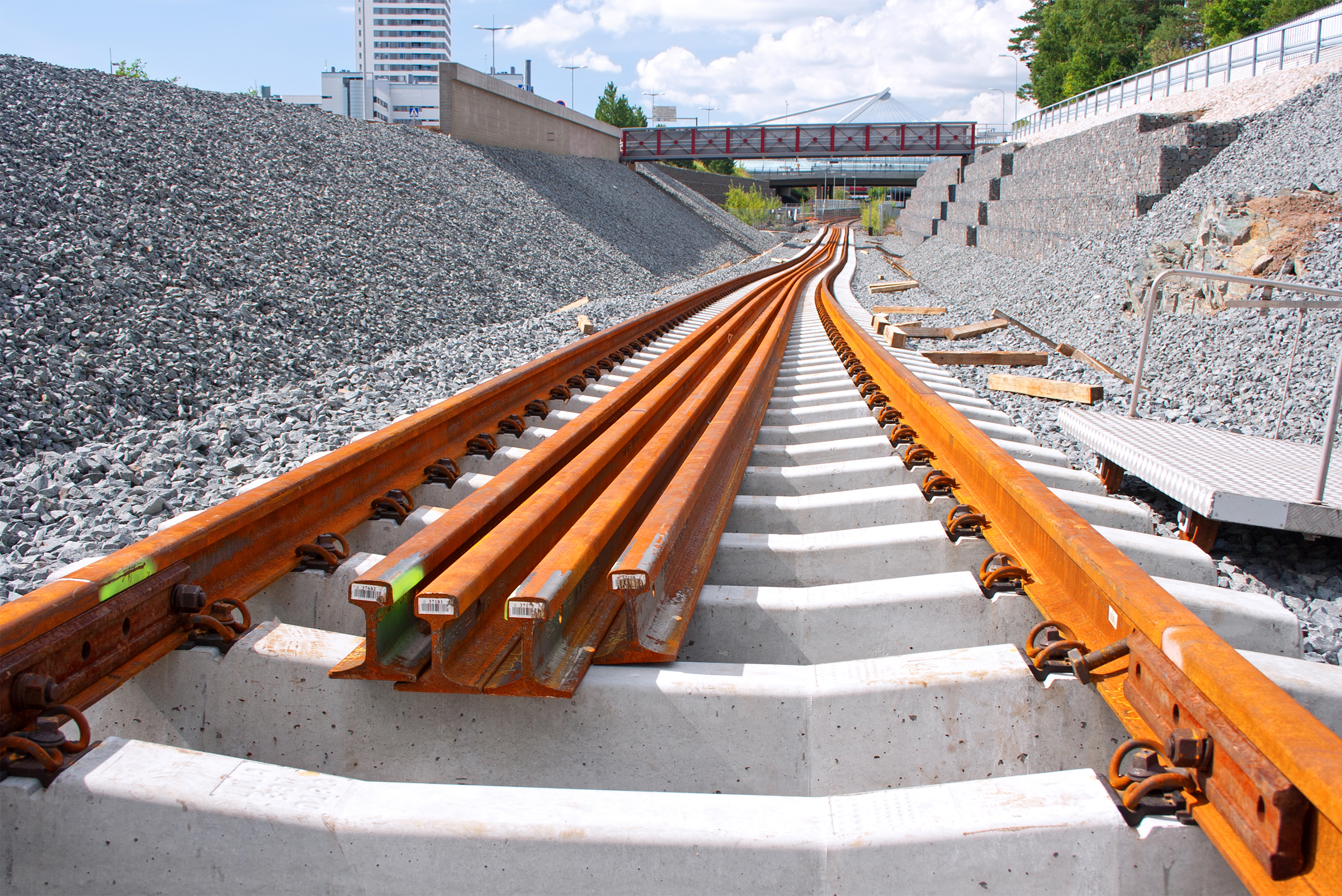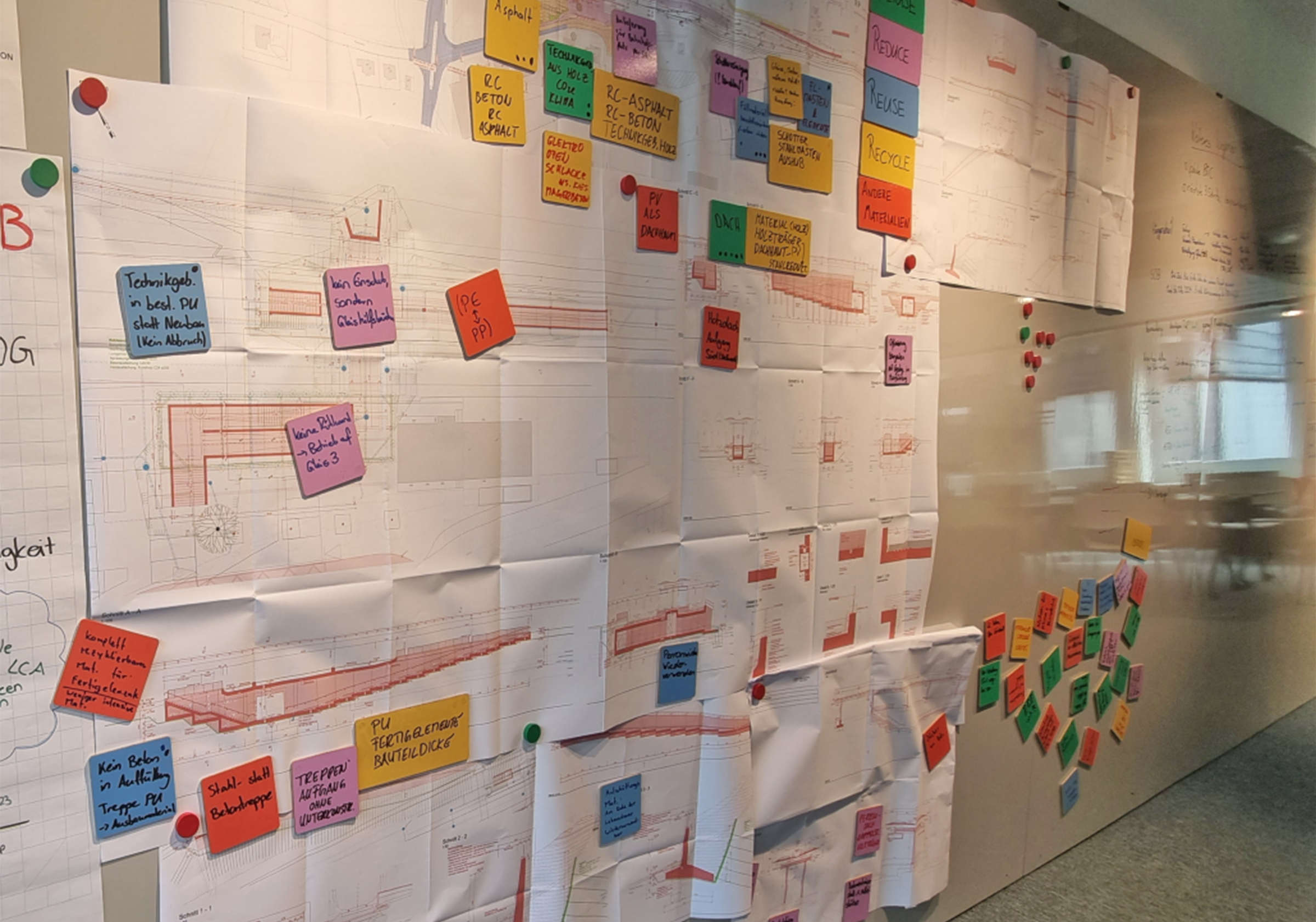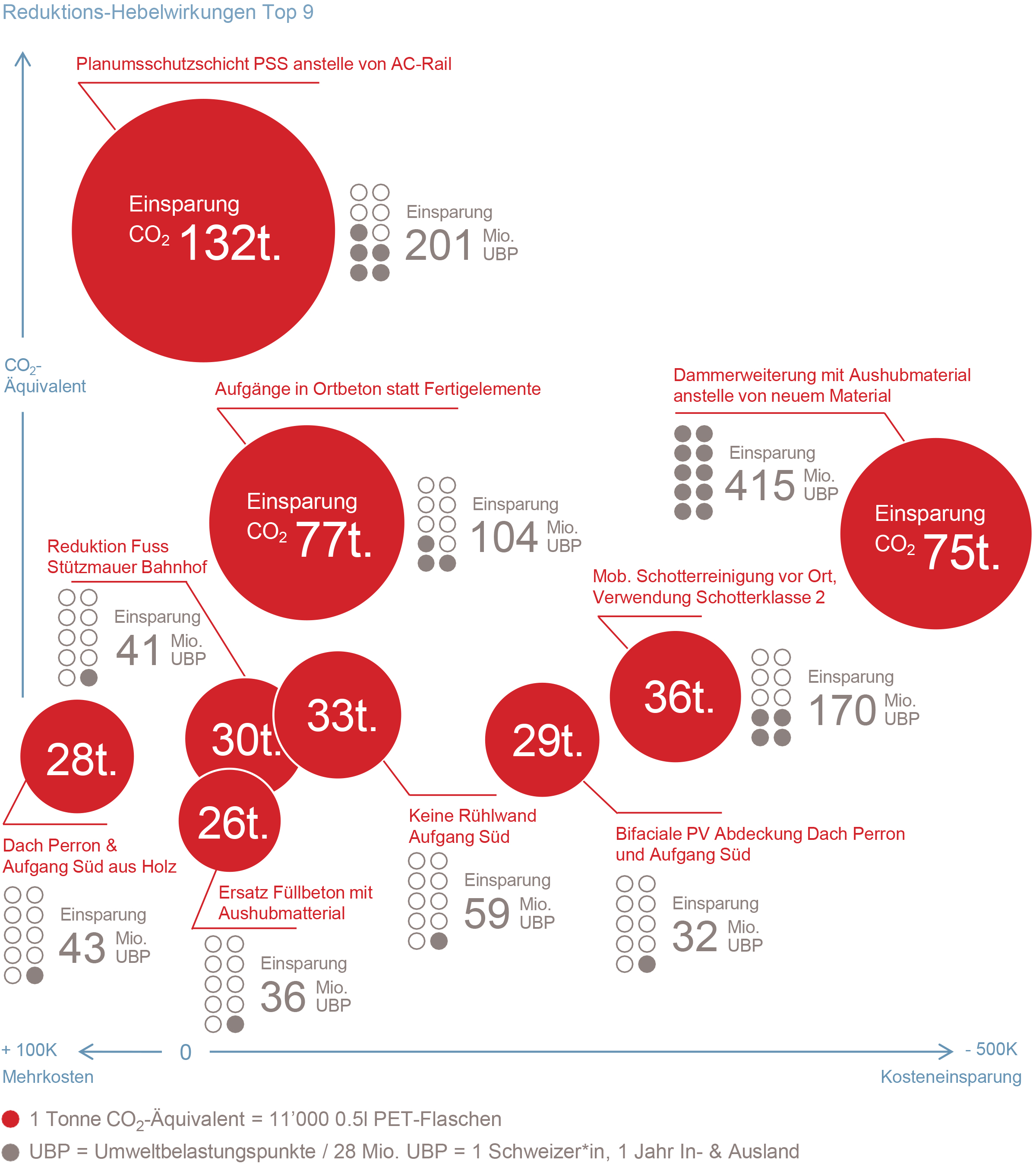Sustainable Station Construction Using the Example of Häggenschwil
Where do we start to avoid as much CO2 as possible in the construction of railroad buildings? Using this question as our guide, we joined forces with the Swiss Southeastern Railway Company (SOB) to develop a climate-impact assessment tool. This balancing method can also be applied to other infrastructure projects.

“Large volumes of carbon emissions can be saved in railroad construction.”
The construction industry causes around 13 percent of the world’s total carbon emissions. According to Architecture 2030, around seven percent of these emissions are generated by construction – cement, iron, steel and aluminum, which includes rail construction projects such as bridges, underpasses and railway stations.
Our project team considers this figure to be too high and that it must be possible to build more climate-friendly infrastructure. While considering ways in which infrastructure projects can be made more sustainable, the team hit upon an innovative idea, which they then developed within the framework of a Boost Camp – EBP's own innovation funding program. As luck would have it, the SOB had just initiated planning for an infrastructure construction project and readily agreed to help develop the idea in the context of a customer project.
A pilot project
The SOB’s is currently planning the reconstruction of the railway station in the Swiss town of Häggenschwil; platform and track systems as well as accesses to the platform are being renewed. Our interdisciplinary EBP team is now helping the railway company to plan as environmentally and climate-friendly as possible, while also creating a strategic advantage for itself in light of pending regulations and carbon taxes.

Brainstorming for climate protection
“The Boost Camp gave us an opportunity to zoom out from the project planning process and develop viable means to reduce carbon emissions,” recalls project manager Seraina Tresch. “One example entails using cast-in-place concrete instead of precast concrete to achieve an annual reduction in carbon emissions of around 58 tons.”
According to Marco Zumstein, one unique aspect of the climate impact assessment is that it enables one “to target and track reductions in both carbon emissions and environmental impact points, or EIPs.” This helps ensure that the value of long-term sustainable measures is not sunk by short-term economic objections. As Zumstein points out, however, the assessment method is quite complex, “The balancing methodology has not yet been established for civil engineering. This means that some of the corresponding material values must be worked out from scratch.”
“We consider both carbon emissions and environmental impact points.”
From concept to climate impact tool
After completing a thorough examination of all key issues in terms of their impact on the environment and climate, we presented our results to our client in the form of an easily accessible management summary. Our climate impact assessment tool will now enable the SOB to make conscious decisions for or against certain building materials and processes. Moreover, the client will also be able to apply the tool to its future construction projects.
Our team is currently expanding the climate impact assessment tool for the SOB to account for additional planning tasks, including cost planning, as a decision-making basis.

What's next?
Given its versatility, our climate impact assessment tool will also prove valuable for public agencies and clients in other building sectors. “Our access to the relevant data and our expertise will help companies in the railway and road construction sectors to introduce more climate friendly practices,” says Project Manager Seraina Tresch. “Ideally, we will conduct our climate impact assessments at the end of the project feasibility phase.”
Project team

Marco Zumstein
marco.zumstein@ebp.ch
Seraina Tresch
seraina.tresch@ebp.ch
Mario Burch
mario.burch@ebp.ch

Katrin Gysin
katrin.gysin@ebp.ch
Lucien Schriber
lucien.schriber@ebp.ch
Thomas Vollmar
thomas.vollmar@ebp.ch